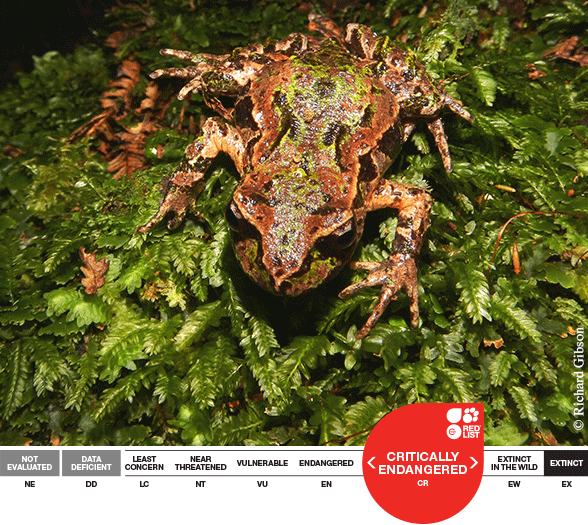
Leiopelma archeyi, commonly known as Archey’s Frog, is listed on the IUCN Red List of Threatened Species as ‘Critically Endangered’. Archey’s Frog is a small green-brown frog found only in New Zealand, where it lives on the North Island in the Coromandel Peninsula and the Whareorino Forest. This frog prefers moist forest at altitudes of 400 – 1000 m. It is the smallest of the four remaining endemic Leiopelma species and is one of the world’s most primitive species of frog. Archey’s Frog is a nocturnal species that lives under stones and logs during the day and is a terrestrial breeder. The larvae of Archey’s Frog hatch from eggs with small arms and legs already developed, thereby skipping the free-swimming tadpole stage.
Between 1996 and 2001 there was an 88% decrease in the Archey’s Frog population at monitored locations. Chytrid fungus was confirmed from wild frogs in 2001 and is implicated in the observed decline but several other factors may have been involved.
The New Zealand Department of Conservation Native Frog Recovery Group is responsible for applying conservation methods, including mammalian predator-control, appropriate research and captive breeding. The Auckland Zoo is currently the only institution to hold the species in captivity and successfully hatched and metamorphosed the species for the first time in 2012/13. There is a significant research effort both in the wild and the lab, including population monitoring, basic ecology and biology, benefits of rodent control in frog habitat, pathology and reproductive biology.
Archey’s Frog is listed as the number one Evolutionarily Distinct & Globally Endangered (EDGE) amphibian. EDGE species have very few close relatives and often have unique appearance, behaviour or lifestyles. They represent a unique and irreplaceable part of the Earth’s natural heritage.
